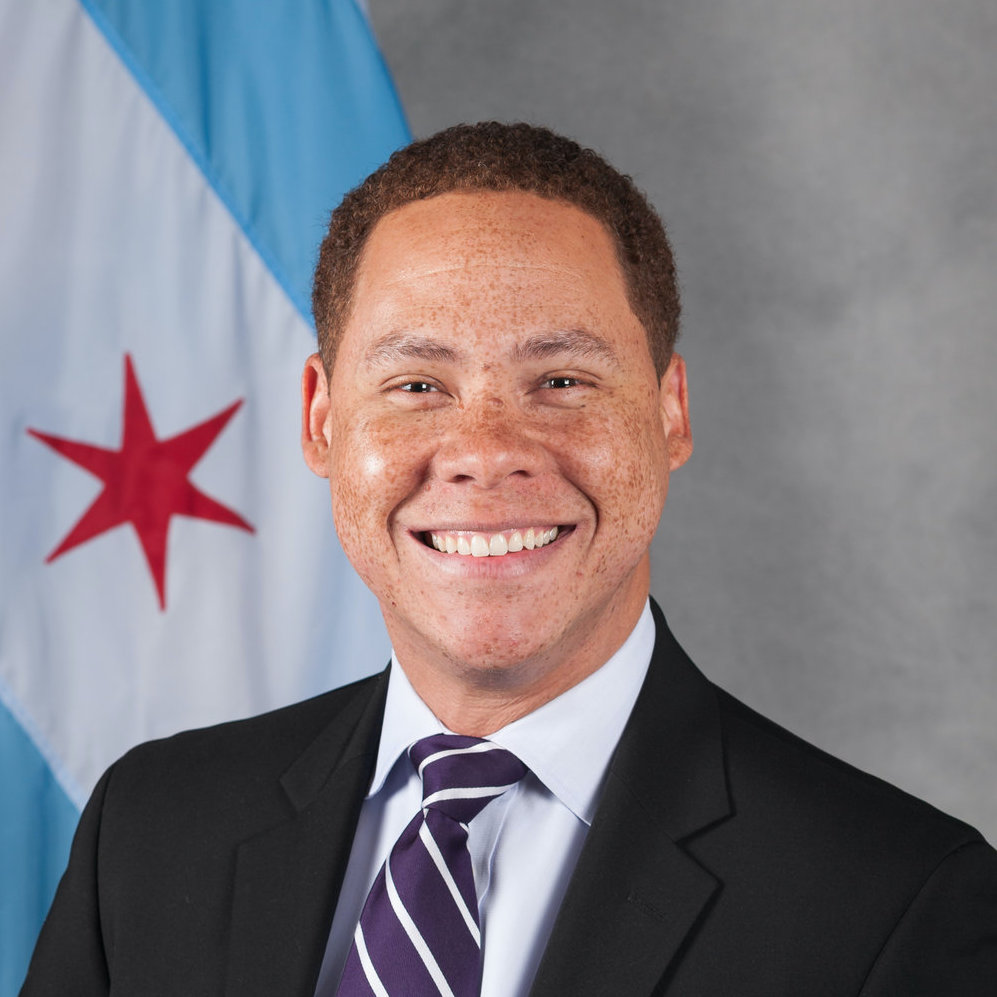While there's many a slip between cup and lip, it's safe to say we've reached a tipping point in Chicago on the issue of "open streets" interventions to make for room for walking and biking during COVID-19 and reopening. An idea that was formerly controversial, with some previously arguing that the context of the pandemic is not an appropriate time to push this vision forward, has now become mainstream. That was evidenced by this Friday morning tweet from Mayor Lori Lightfoot.
Some permanent legacies of former CDOT chief John LaPlante, who passed away from COVID-19 last month: He helped make State Street more pedestrian and transit friendly, and cleverly rerouted Lincoln Ave. to create the beloved Lincoln Square pedestrian zone.https://t.co/e4XbvXybMT pic.twitter.com/k8rWWZ65Fo
— Streetsblog Chicago (@streetsblogchi) April 14, 2020
The alderman said he's currently soliciting input from the community on these ideas, as well as talking to CDOT planners. Asked for an update on these discussions, CDOT provided this statement to Streetsblog.
Community engagement has been and will remain a critical component of the Chicago Department of Transportation’s process when creating new transportation policy, as CDOT Commissioner Gia Biagi has said. Over the past few weeks, and in response community transportation concerns, CDOT has engaged both the general public and key transportation stakeholders, including aldermen, to better understand transportation issues created by the COVID-19 pandemic in all of Chicago’s neighborhoods. Over the next few weeks, CDOT looks forward to working with these groups to create and rollout effective and meaningful transportation policies that help increase access and mobility for all of Chicago’s residents.
Martin noted that open streets interventions could take many forms, with open streets or Slow Streets potentially taking place only once a week, but they could also possibly happen 24-7 during the pandemic and recovery. These could be citywide interventions, or else just take place in neighborhoods like Lincoln Square where people are "raising their hands" to request them, he said. "We're looking at the best ways to solicit community input. We don't want people to feel like this is imposed on them."
The aldermen didn't have an estimates on when we might see open streets intervention in his ward. But he said that we could see some action once "we see [infection] numbers trending in a positive way, so that there's some level of comfort with these initiatives."
Martin added that open streets should be accompanied by outreach to make sure people understand what kind of behavior is acceptable (pedestrian activity, cycling, and other forms of mobility for transportation and recreation with six-foot-plus spacing) and isn't (congregating in large groups.) "But we want to make sure that as people are spending more time outside, we are adjusting infrastructure accordingly."





